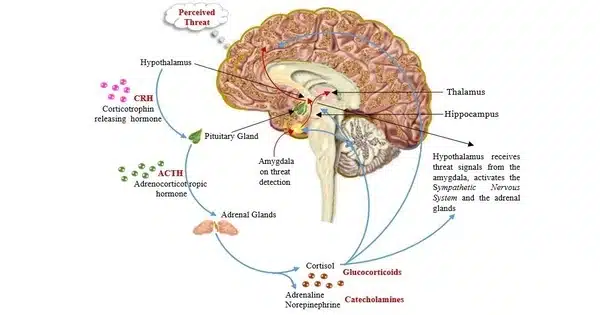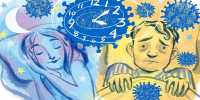A pioneering study found a substantial association between anxiety disorders and the brain receptor TACR3, as well as testosterone. Prof. Shira Knafo, head of Ben-Gurion University’s Molecular Cognitive Lab, conducted the study, which was published last month in the journal Molecular Psychiatry.
Anxiety is a common response to stress, but for people suffering from anxiety disorders, it can have a severe influence on their everyday lives. Clinical research suggests a link between low testosterone levels and anxiety, particularly in males with hypogonadism, which is characterized by impaired sexual function. However, the exact nature of this association has remained unknown until now.
Professor Knafo revealed that male rodents with extremely high anxiety levels have significantly reduced amounts of a particular receptor called TACR3 in their hippocampus. The hippocampus is a brain area that plays an important role in learning and memory. TACR3 belongs to the tachykinin receptor family and responds to a chemical called neurokinin. This observation grabbed the researchers’ interest and laid the groundwork for a thorough analysis into the relationship between TACR3 deficiency, sex hormones, anxiety, and synaptic plasticity.
TACR3 appears to play an important role in the link between anxiety and testosterone. The researchers have uncovered the complicated pathways underlying anxiety, opening the door to novel therapies, such as testosterone therapy,
The rodents were classified based on their behavior in a standard elevated plus maze test measuring anxiety levels. Subsequently, their hippocampi were isolated and underwent gene expression analysis to identify genes with varying expressions between rodents with extremely low anxiety and those with severe anxiety.
One gene that stood out was TACR3. Previous research had revealed that mutations in genes associated with TACR3 led to a condition known as “congenital hypogonadism,” resulting in reduced sex hormone production, including testosterone. Notably, young men with low testosterone often experienced delayed sexual development, accompanied by depression and heightened anxiety. This pairing led researchers to investigate the role of TACR3 further.
Prof. Knafo and her team were aided in their research by two innovative tools they crafted themselves. The first, known as FORTIS, detects changes in receptors critical for neuronal communication within living neurons. By utilizing FORTIS, they demonstrated that inhibiting TACR3 resulted in a sharp increase in these receptors on the cell surface, blocking the parallel process of long-term synaptic strengthening, known as LTP.

The second pioneering tool employed was a novel application of cross-correlation to measure neuronal connectivity within a multi-electrode array system. This tool played a pivotal role in uncovering the profound impact of TACR3 manipulations on synaptic plasticity.
Synaptic plasticity refers to the ability of synapses, the connections between brain cells, to change their strength and efficiency. This dynamic process is fundamental for the brain’s adaptation to the environment. Through synaptic plasticity, the brain can reorganize its neural circuitry in response to new experiences. This flexibility allows for the modification of synaptic connections, enabling neurons to strengthen or weaken their communication over time.
Essentially, synaptic plasticity is a critical mechanism that allows the brain to encode and store information while constantly responding to changing external stimuli and internal circumstances. Importantly, it demonstrated that impairments caused by TACR3 inactivity may be rapidly corrected with testosterone injection, indicating the possibility of novel ways to address the issues associated with testosterone deficiency anxiety.
TACR3 appears to play an important role in the link between anxiety and testosterone. The researchers have uncovered the complicated pathways underlying anxiety, opening the door to novel therapies, such as testosterone therapy, that could improve the quality of life for people suffering from sexual development abnormalities, as well as associated anxiety and despair.















